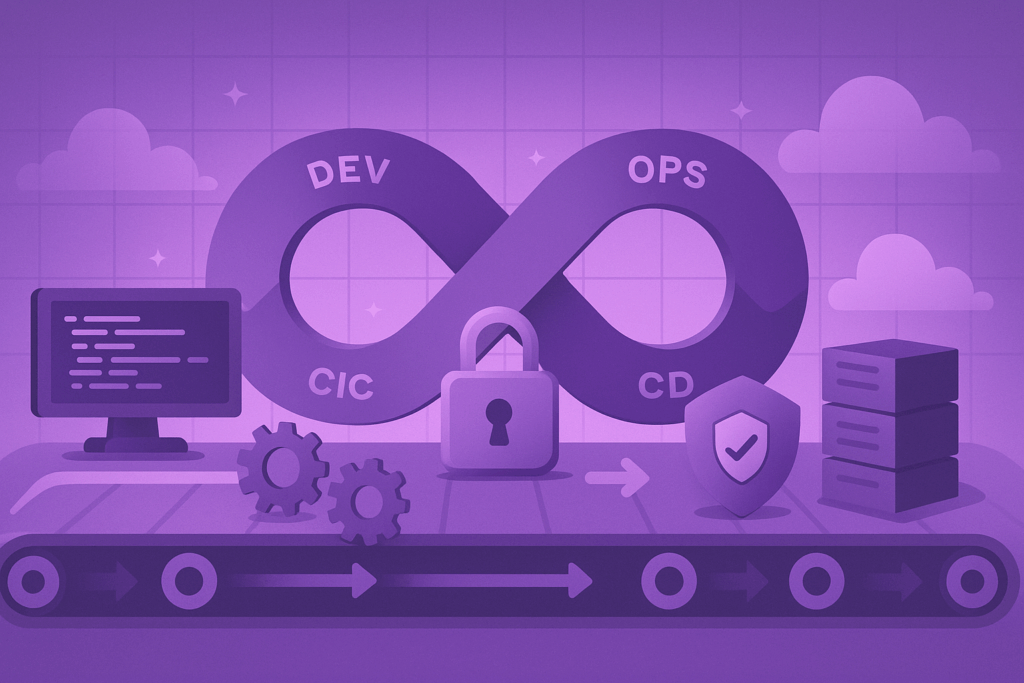
In 2004, Tobias Lutke and Scott Lake wanted to build an online store to sell snowboarding equipment. From their experience, none of the current e-commerce platform offerings were good enough to help them achieve their vision.
So Lutke, a software engineer by trade, decided to build the tooling and infrastructure necessary for their e-commerce brand “SnowDevil” from scratch.
These sets of tools where novels solutions were unavailable to the market, and soon,
they started refining and gearing these tools towards helping other merchants build their own online stores. In 2006, Shopify was launched. And since then, it has grown into
a billion-dollar business.
Today, Shopify hosts over 1.75 million merchants on their platform. Some of the biggest brands using Shopify today include:
Let’s say you have a business idea that requires an online store to sell your product to customers. Let us also suppose that failure was not an option, and that the goal is to make an
e-commerce business that is as successful as humanly possible. What would you need to build this successful e-commerce store?
Some of what you would need are:
- Hosting:
It allows for accessibility to your store to anyone with an internet connection. As the business scales and user traffic increases, the ability to handle this load is crucial for any e-commerce business to succeed and provide satisfactory experience to its customers.
- Solid Web Design and Customization:
Web and mobile responsive design to maximize consumer experience on desktop and mobile. The ability to seamlessly customize content like adding/removing products, changing product descriptions, quickly, or to make changes to the site overtime. Customization also extends to the ability to add new features to an e-commerce over-time.
- Site Security, legal compliance, and payment gateways:
SSL certificates to encrypt data between clients and merchants, and Payment Card industry (PCI) compliance to enable the secure processing of credit and debit cards. Also refers to the capacity to integrate different payment providers which crucial especially when expanding to markets in new geographical locations, as well as the ability process different currencies.
- Staffing and team management:
Collaborative tools are important as business scales and certain tasks need to be outsourced. The ability to delineate which parts of your business your staff has access to depending on their role and having an interface to allow for team collaboration is very important for business operations.
- Marketing, Analytics and Reporting:
Flexibility and integration with different advertising methods, the ability to integrate with the brand’s social media pages, and the ability to track valuable information that helps objectively determine what is working and what isn’t.
- Store Management:
The store owner and staff have access to a dashboard which allows them the ability to manage and fulfill orders, inventory management, shipping, and delivery, returns and refunds.
- Customer Services:
Tools to allow for effective communication between a business and its customers are necessary for positive client experiences help build lasting brands.
- Optimizations:
Speed, SEO, and conversion rate optimizations are an essential piece to e-commerce success. Fast website load times are directly correlated to high conversions. SEO enhances free traffic and site’s discoverability, and conversion rate optimizations are tests of varying designs, copies and features that lead to higher conversion from customers.
- Global E-commerce:
As a business scales, the ability for merchants to expend into non-native markets and to new customers becomes of import. It is a very complex problem to address as every country is different and more than likely will require their own unique strategy. The world is increasingly becoming interconnected, so the need for cross-border strategies will only become more significant over time.
Those are some of the problems that would have to be addressed to build an e-commerce business, though admittedly some would have to be addressed at different phases of scaling process.
Getting these various processes set up would literally take months and a significant amount of capital. But even worse, if the business failed, all the time, capital and effort would be very costly. And this doesn’t even account for extraneous costs like those related to the product itself and marketing.
Starting from scratch would be the equivalent of having to build a mini-Amazon every time someone wants to sell their goods online and scale their business. The barrier of entry and the risks are too high, especially for one with a limited amount of capital.
The solution to this thorny problem is e-commerce platforms.
E-commerce refers to all activities pertaining to the purchasing and selling on the global online marketplace. With advent of the internet, retail has gone digital. Anyone anywhere can take advantage of the global and local supply chain system to ship goods and services to customers around the world. And this trend is only increasing as global internet adoption rises over time. According to Statistica, in 2021, over 2 billion people have purchased goods online, and the online retail market surpassed 4.9 trillion us dollars in sales worldwide. And all indications suggest that this market will only increase over time.
An e-commerce platform is thus an intermediary and a facilitator of online commerce. For business owners, it allows for access to software applications and enables them to manage their website, marketing, sales, and operations of their businesses. As for customers, it allows for a more standardized, secure, and professional shopping experience.
E-commerce platforms play a central role in digital retail today because they are both the cheapest, and fastest way to start an online store with minimal tech-savvy or design experience. An aspiring entrepreneur armed with his willingness to learn can setup an online store within a day, and more importantly, failure is much less costly than the alternative.
Some of the most popular e-commerce platforms are:
Shopify offer a 14-day trial to all new users with no requirement for payment information. This provides ample time to setup and familiar oneself with the platforms. Beyond that it offers 5 paid plans:
- Shopify Lite – $9 USD per month. This plan is aimed at merchants who sell in person or may need to add some Shopify features to an existing site. Some of these features include the ability to view reports, issue gift cards, adding a buy button to an existing site. A merchant cannot build an e-commerce store using this plan.
- Shopify Basic – $29 USD per month. The basic plan is geared towards merchants that are starting new businesses. It allows access to 2 staff accounts, up to 4 inventory locations, unlimited products, hosting, and free SSL certificate. The transactions fees for this account are 2.0% and support is 24/7. From the basic plan on up, all plans include an e-commerce website and a blog.
- Shopify – $79 USD per month. The Shopify plan is aimed towards merchants who are already getting consistent sales online and want to start expanding their existing business. This plan provides beyond some of the standard features of the basic plan, and additionally it provides up to 5 staff accounts and inventory locations. The transaction fee for this plan is 1.0%.
- Shopify Advance – $299 USD per month. This plan is for established businesses with high-volume of sales. Beyond the features of the Shopify plan, it offers up to 15 staff accounts, 8 inventory locations, automation and access to more detailed reports, and duties and import tax data. The transaction fee for this plan is 0.5%.
- Shopify Plus – $2000 USD or higher per month depending on business needs. This is Shopify’s enterprise solution. Access to features such as Shop Pay that promises 18% higher conversion, and 60% faster checkout. Other features included built-in AR, video and 3D media on product page, the ability to localize shopping experiences with multiples stores, greater ability to customize checkout and discount offers, and even an even greater ability to automate complex processes. The transaction fee is waivered.
The transaction fees are inversely proportional to your Shopify plan, and more importantly provides incentive for Shopify to improve sales revenue for their customers.
At the beginning of the article, I highlighted some of the necessary tools that are needed to setup an e-commerce business, here is a quick overview of how Shopify addresses some of these features:
- Hosting
With Shopify there is no need for a merchant to pay a server administrator to setup their web hosting. It is part of Shopify packages starting from the basic plan, and as such there are no extra fees associated with it, and more importantly, there’s no technical knowledge required of the merchant. It’s fast and hassle-free. The hosting bandwidth is unlimited which is more than adequate for any scale of user traffic, and prevents the store from crashes from too much site traffic.
- Site Security legal compliance, and payment gateways
Shopify takes care of site security and updates. SSL certification is a standard offering for all e-commerce websites on Shopify. This enables the encryption of data to block hackers and thieves from stealing usernames, password, credit card data and other sensitive data.Shopify is also PCI compliant and is a level 1 service provider. This entails conforming to the strictest standards of payment data security. That is why Shopify’s checkout page is being used by over a million e-commerce businesses today and is a testament to the safety and reliability of Shopify’s payment gateway. Presently, the company also offers integration with over 100 payment providers, including PayPal, Stripe, and Amazon Pay. A sizeable number of these payment providers are particular to certain national markets, which means that a merchant can use these options to enable buyers in foreign markets to make purchases with payment providers that they are already accustomed to using in their country. Shopify also allows manual forms of payments like money orders and cash on delivery. There is also a Point-of-Sale feature for in-person sales at retail stores.Shopify also offers fraud analysis. This feature helps identify orders with high probability of being fraudulent to avoid potential chargebacks and to gather evidence for any disputed charges. Fraud analysis is available starting with the Shopify plan and is backed by a machine learning algorithm that is trained using transactions across all Shopify stores.
- Customer service
Shopify offers a default messaging system for messaging clients, but its feature are quite limited. And this is where Shopify’s extensive ecosystem of applications truly shine. There is a wide range of customer service apps with varying customer support capabilities. There are Live chat bots or options to allow employee to the live chats, helpdesks apps, various chatting methods including WhatsApp, Telegram, Twitter, Facebook messenger and email, to list a few. Merchants are free to create unique customer experiences for their customers.
- Marketing, Analytics and Reporting
Shopify offers social media integration, as well integrated sales channels with various platforms like Facebook, Google, Amazon, Instagram, etc. This makes it easier to setup business pages on those platforms and to set up a marketing funnel. Email and SMS marketing are not default features of Shopify but can easily setup through downloading Shopify apps. The Shopify merchant also has access to a dashboard that provides access to reports like product analytics, sales reports, profit reports, customer reports to list a few. Merchants can also create custom reports to help narrow down reports to the exact data that they need. The more data, and the higher the Shopify plan, the more accurate reports a store owner has available.
- Staffing and management
With Shopify, the store owner decides the level of permission they are willing to give to staff members, whether it’s for managing orders, adding products or collaborators like Shopify developers to help with a specific task. The number of staff is determined by the merchant’s plan. The store owner controls access, and this help protect their business.
- Store Management
The Shopify dashboard is the primary way merchants interact with their business. Through it, they have wide array of tools and features at their disposal, including order, shipping, staff and inventory management, data and insight on your store, and the ability to track payment, profit, and capital in one place. Accessing the Shopify dashboard is also possible through mobile.Its biggest advantage is that it offers a centralized merchant interface through which a merchant can track all the important information necessary to make good business decisions and to scale.
- Customer service
Shopify offers a default messaging system for messaging clients, but its feature are quite limited. And this is where Shopify’s extensive ecosystem of applications truly shine. There is a wide range of customer service apps with varying customer support capabilities. There are Live chat bots or options to allow employee to the live chats, help-desks apps, various chatting methods including WhatsApp, Telegram, Twitter, Facebook messenger and email, to list a few. Merchants are free to create unique customer experiences for their customers.
- Optimizations
Conversion rate optimization is one of the methods a merchant can use to test out different versions of their store for conversion rates. An important caveat is that conversion rate optimization only works with stores who already have a significant amount of traffic, so it shouldn’t be a priority in the beginner brands.Speed optimization is another method of optimizing a store that is offered by Shopify. Speed is important because conversions drop precipitously with every extra second of load time. According to Google, the probability of bounce-meaning that a user leaves your site- increases 32% as page load time goes from 1 second to 3 seconds. Quite a few themes have been rebuilt from scratch to enable high speed.Another way to optimize a website is SEO. SEO refers to search engine optimization. Traffic on the internet is generally filtered through search engines such as Google, Bing or Duckduckgo. So the ability to rank high on searches on these platforms is paramount, and the process of improving one’s website ranking on aforementioned platforms is referred to as SEO. The biggest advantage is that traffic generated from such methods are free. Shopify has gotten much better overtime with its tooling and ability to improve a website’s SEO.Depending on the optimization that a client would like to perform, Shopify provides several tools to meet those ends some of which are native to the Shopify platform, and others are provided through Shopify apps that can be downloaded from the app store. For these optimizations, a non-tech savvy would the help of a Shopify developer is certainly.
- Global E-commerce
Global e-commerce is a challenging prospect that entails currency conversions, local payment methods, import duties and language translation. Every additional market is a potential point of additional considerations for a business owner.To deal with these complex set of problems, Shopify has recently introduced Shopify Markets. Starting at the standard plan, e-commerce site on Shopify enables the ability to customize how merchants sell in each market, including 20 languages and 133 currencies available in Shopify Payments, the ability to set custom prices for markets, local product availability, duty and import taxes estimations, etc.. These very valuable because conversion rate increases dramatically when a client is visiting a store which is rendered in their local language and currency, and data on import taxes and collect duties provide cost clarity to merchants.Shopify Markets also includes the ability to create international domains for your store for SEO optimization within the local market itself, and significant amount of payment methods to facilitate purchases from foreign markets.With Shopify Markets, cross-border business is simplified to allow merchant access to pertinent data to help them identify market trends, and local preferences. A few years ago, if a Shopify merchant want to sell their products in multiple countries, they would have had to create a new store for each market. The merchant experience has significantly improved over time.
Global e-commerce is a challenging prospect that entails currency conversions, local payment methods, import duties and language translation. Every additional market is a potential point of additional considerations for a business owner.
To deal with these complex set of problems, Shopify has recently introduced Shopify Markets. Starting at the standard plan, e-commerce site on Shopify enables the ability to customize how merchants sell in each market, including 20 languages and 133 currencies available in Shopify Payments, the ability to set custom prices for markets, local product availability, duty and import taxes estimations, etc.
Lennylemons.com
Launch a brand new apparel drop-shipping brand. The launch was successful and client sold over 2 million in goods in the first year.
Fitwear.net
Developed a brand and website that grew the customers revenue by 5 times and achieve over 20,000 orders per month.
Holstee.com
Developed a complete brand with over 10,000 in monthly orders and 150,000 users.
Myserenitykids.com
Improve the performance of a high-volume Shopify store while the store is live for the popular organic premium baby food brand Serenity Kids. Our improvements have increased the client’s sales by 22%, while significantly lowering the website’s bounce rate.
Goshopada.com
Shopify’s greatest strength is that it offers the ability to manage and add basic features to a store with such simplicity that even a person with no coding experience can build an e-commerce store. A non-technical merchant, for low startup costs and setup time, can use the platform’s user interface to promote, sell and ship their products. However, the more complex a functionality is needed, the more likely a technical resource such as a Shopify developer is needed.
Ultimately, the only way to find out if Shopify is right for you is to try it out yourself. Shopify offers a 2-week free trial, which provides anyone with enough time to familiarize themselves with the platform. Today, starting with an online business has become very low risk, cheap and easier overall.
By Wolf Laleau,
Web Development Team Lead
247 Labs

















